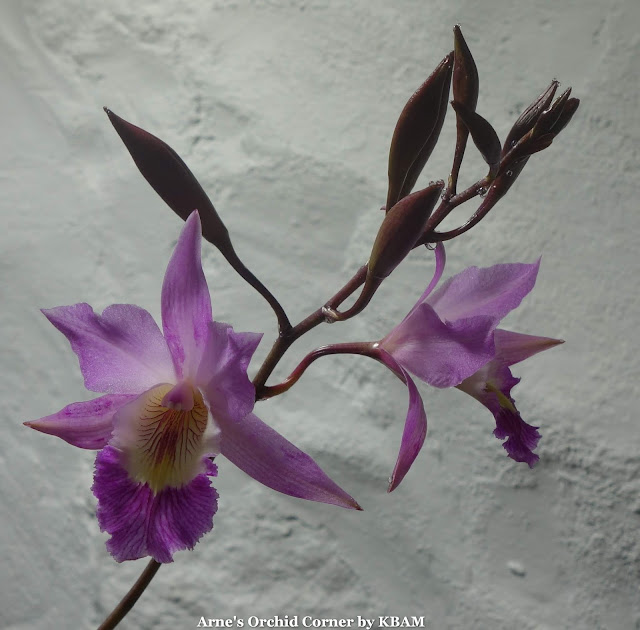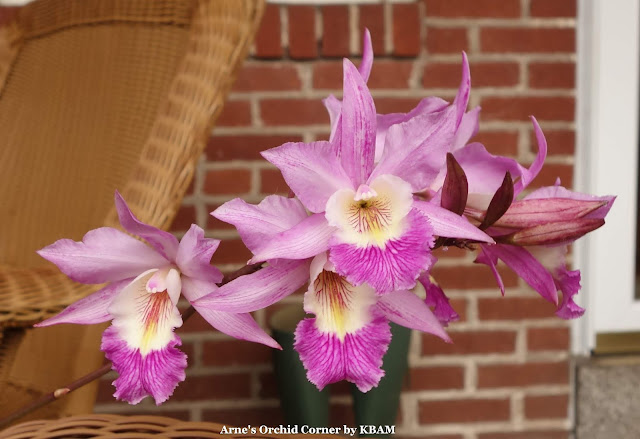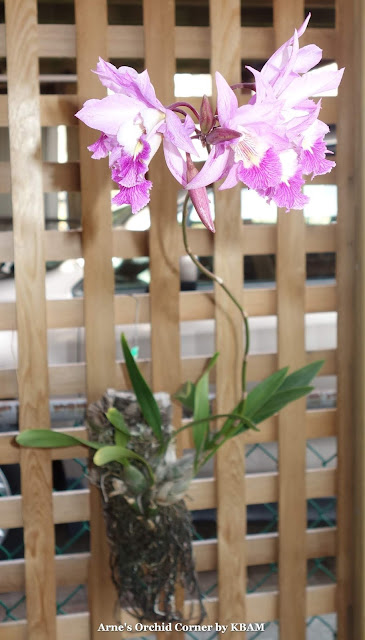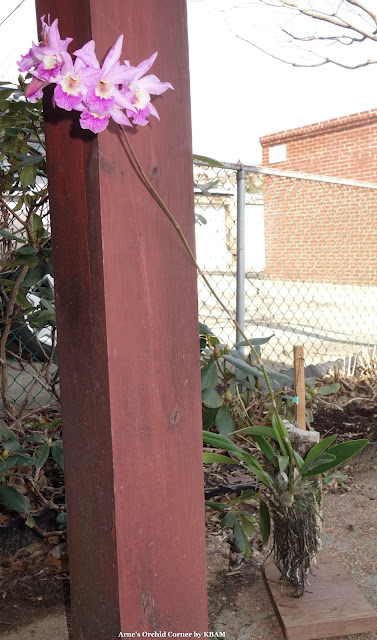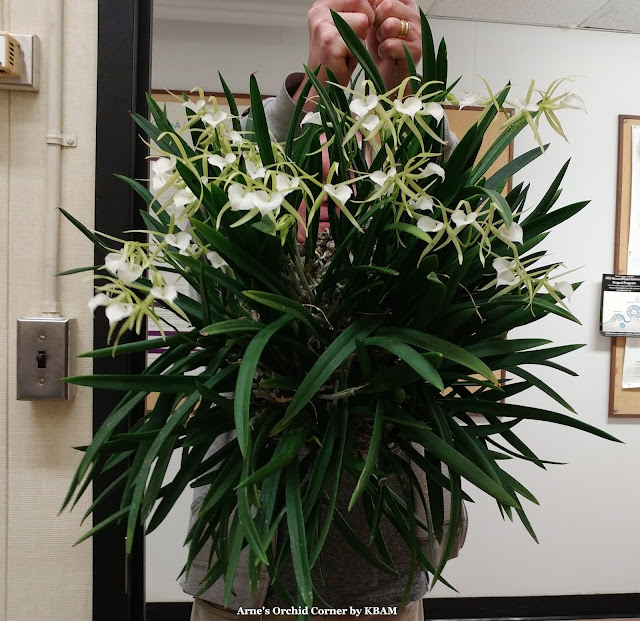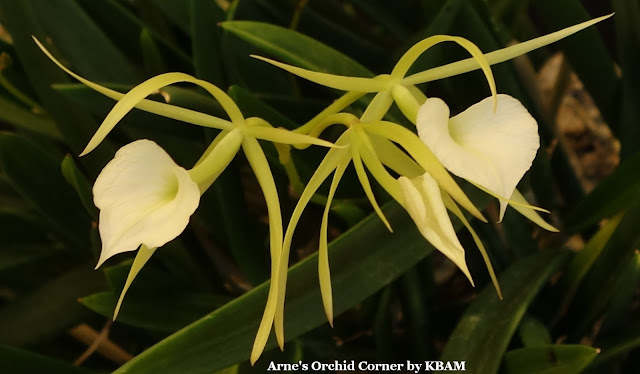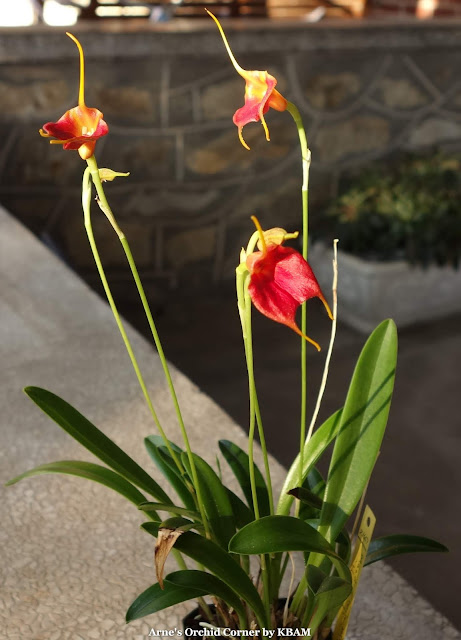 |
| Phalaenopsis Taida Sunflower Boy |
When Arne started with orchids decades ago, and Phalaenopsis was still considered an exotic genus, he bought Phalaenopsis hybrids. Everything changed over time and Phalaenopsis became the most popular orchid ever. He hasn't bought any Phalaenopsis hybrids since.
However, Arne brought home this orchid after attending the local orchid society meeting. He got the winning ticket for the society’s door prize, which was a gigantic Cymbidium. Of course, we have no space for it in the house, nor can he take it home in the car. So Arne swapped it for this more manageable Phalaenopsis.
Phalaenopsis Taida Sunflower Boy is a complex hybrid to say the least and a check in the database, OrchidRoots, reveals a background involving more than ten different species although Phal. amabilis makes up about 25%.
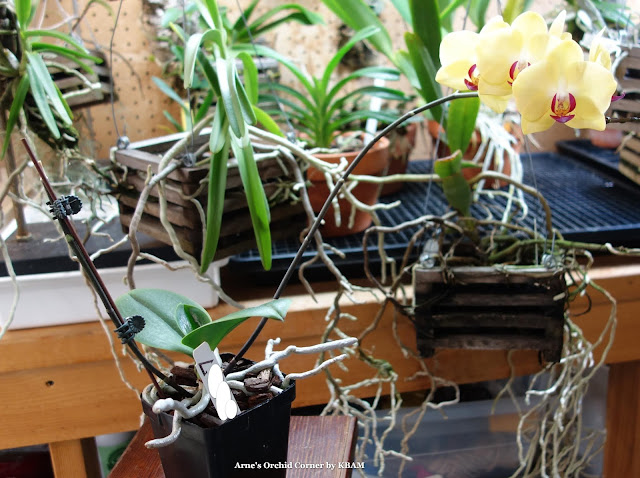 |
| A) The side profile of entire plant |
 |
| B) Six flowers and the four buds |
Today in his care, this orchid has six beautiful flowers and four more buds waiting to develop (B). A nice looking orchid and worth posting in my blog.
 |
| C) A close up of the flowers. |
I find the flowers very beautiful and although Arne thinks Phalaenopsis hybrids are no longer a challenge, even he cannot deny that these are gorgeous flowers! I hope you have enjoyed seeing this hybrid of ours.

